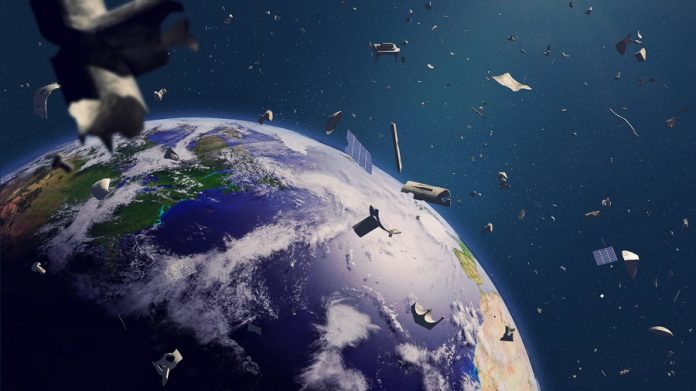In case you hadn’t already heard: Space junk is becoming a real problem. There’s so much manmade trash floating around in Earth’s orbit that it’s actually posing a danger to future space missions and even ongoing programs like the International Space Station. It’s bad, and with companies like SpaceX planning on launching thousands of more satellites on a regular basis, it’s only going to get worse.
On Thursday night, the seriousness of our space junk problem became abundantly clear when it looked like an old rocket stage from a Chinese mission was on course to collide with an already-dead Soviet satellite. Scientists monitoring both objects crunched the numbers and determined that there was an over 10% chance that the objects would collide, which is quite high and certainly worth paying attention to. Thankfully, the two large pieces of space debris missed one another, but that doesn’t mean we can go back to ignoring our space junk woes.
I know what you’re thinking: “Okay, so an old, dead Soviet satellite almost hit a piece of a Chinese rocket. So what?”
While it’s true that neither of the pieces of debris were functional or even important to ongoing operations, a collision still could have been catastrophic. You see, when manmade objects in space run into each other at high speeds they create even more debris as a result. That means two large objects become dozens, hundreds, or even thousands of smaller, but still dangerous objects that continue to orbit Earth.
We are monitoring a very high risk conjunction between two large defunct objects in LEO. Multiple data points show miss distance <25m and Pc between 1% and 20%. Combined mass of both objects is ~2,800kg.
Object 1: 19826
Object 2: 36123
TCA: Oct 16 00:56UTC
Event altitude: 991km pic.twitter.com/6yWDx7bziw— LeoLabs, Inc. (@LeoLabs_Space) October 13, 2020
Even these smaller objects can cause serious problems for space missions, as something as small as a bolt moving at high speeds can cause incredible damage if it impacts a vital piece of cosmic machinery. If, heaven forbid, a crewed spacecraft runs into or is struck by a tiny, fast-moving piece of metal as it makes its way to the space station or the Moon, the results could be catastrophic.
On top of that, the smaller an object is, the harder it is to track from Earth. Two large objects are a problem, sure, but a thousand smaller objects moving at varying speeds and in new directions could spell disaster.





























